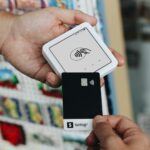The Future of Fashion Shopping: How Virtual Try-On Experiences Are Revolutionizing E-Commerce
In today’s digital age, online shopping has become an increasingly popular way to purchase clothing and accessories. With the rise of e-commerce, consumers have access to a vast array of products from the comfort of their own homes. However, one major challenge that online shoppers face is trying on clothes before purchasing them 1 . This is where virtual try-on experiences come in – a game-changer for the fashion industry.
Virtual try-on experiences allow customers to see how clothing and accessories would look on them without having to physically try it on. This technology uses augmented reality (AR) and artificial intelligence (AI) to provide an immersive and realistic experience. With virtual try-on, customers can try on multiple outfits, experiment with different styles, and even share their results with friends and family.
But how are virtual try-on experiences impacting e-commerce? In this article, we’ll explore the benefits of virtual try-on experiences in e-commerce, how they’re being used by retailers, and what the future holds for this technology.
The Benefits of Virtual Try-On Experiences
Virtual try-on experiences offer several benefits to both customers and retailers. For customers, virtual try-on provides a convenient and time-saving way to shop online without having to physically try on clothes. This reduces the likelihood of returns and exchanges, which can be costly for retailers 2 .
For retailers, virtual try-on experiences provide an opportunity to increase sales and customer engagement. By providing customers with a realistic and immersive experience, retailers can build trust and credibility with their customers, leading to increased loyalty and repeat business 3 .
How Retailers Are Using Virtual Try-On Experiences
Several retailers are already using virtual try-on experiences to enhance the shopping experience for their customers. For example, Net-a-Porter has launched a virtual try-on feature on its website and mobile app 4 . Customers can upload a photo of themselves and virtually try on clothes from over 600 brands.
Other retailers, such as Sephora and Macy’s, are also using virtual try-on experiences to promote their products. For instance, Sephora has launched an AR feature that allows customers to virtually try on makeup 5 . Customers can take a selfie and use the app to apply different lip colors and see how they would look.
Case Study: ASOS’s Virtual Try-On Experience
ASOS, a leading online fashion retailer, has also launched a virtual try-on experience on its website. The platform allows customers to upload a photo of themselves and virtually try on clothes from over 80 brands 6 .
The virtual try-on feature is integrated with ASOS’s existing product pages, allowing customers to see how different items would look on them in real-time. This has resulted in a significant increase in sales and customer engagement for the retailer.
The Future of Virtual Try-On Experiences
As technology continues to evolve, we can expect to see even more advanced virtual try-on experiences in e-commerce. For example, retailers are already using AI-powered avatars to provide customers with personalized fashion recommendations 7 .
In the future, we can expect to see virtual try-on experiences that integrate with social media platforms, allowing customers to share their shopping experiences on Instagram and other platforms. This will not only provide customers with a more immersive experience but also offer retailers new opportunities for marketing and customer engagement.
Conclusion
Virtual try-on experiences are revolutionizing the way consumers shop online. By providing a convenient and realistic way to try on clothes without having to physically do so, virtual try-on experiences are increasing sales and customer engagement for retailers. As technology continues to evolve, we can expect to see even more advanced virtual try-on experiences in e-commerce.
In conclusion, the future of fashion shopping is looking bright – with virtual try-on experiences leading the way. By embracing this technology, retailers can build trust and credibility with their customers, increase sales, and stay ahead of the competition.
References
[1] Google.com
[2] BusinessOfFashion.com
[3] ForbesTechCouncil.com
[4] NetAPorter.com
[5] Sephora.com
[6] ASOS.com
[7] FastCompany.com
You Also Might Like :




Pingback: Loyalty Rewards Gifting Strategies
Pingback: E-Commerce Error Handling Strategies Technical Solutions
Pingback: E-Commerce Real-time Feedback: Boosting Customer Experience Through Data-driven Insights - Spartan.ist
Pingback: High Quality Visuals Required Essential Images Guide